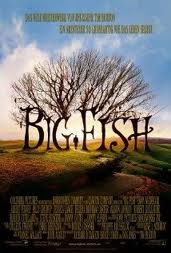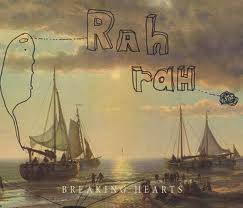Rwanda Set My Heart on Fire
How mild air pollution awoke the advocate within me
By Kate H.
|
Rwanda, often called ‘The Land of a Thousand Hills’ is the destination for the 2011-2012 World Vision Youth Ambassadors| Henry Vanderspeck |
When my flight landed in Rwanda it was the dead of night and the air smelled like burning rubber.
When my concern over the safety of our plane had subsided, a different thought occurred to me. I thought about all the people who had told me that Africa would get into your blood, under your skin. How the passion of this vast continent would hold your heart forever. Well maybe that’s what a country filled with passion smells like. Like it’s people are burning up inside.
The chance to travel to Rwanda came to me not so much by chance. Month’s prior to this, after hearing about it through a presentation from a local World Vision Representative, I had applied to World Vision’s Youth Ambassadorship Program. This program is one that is available to all Canadian youth ages 16 to 19. World Vision Canada selects six youth from across the country to immerse them in their programs and give them the experience of a lifetime. The chosen Youth Ambassadors spend one week in Toronto at the WV Head Office, meeting with their staff, learning about their programs and getting to know each other. They then spend two weeks in a country where World Vision Canada has Area Development Programs, or A.D.P.’s. They meet with the people of this country, learning about their culture and the impact that World Vision has had on their lives. They also attend an International Youth Forum, hosted by World Vision, where they meet with youth from across Africa.
Upon their return the Youth Ambassadors spend the year doing presentations, interviews and other forms of media outreach. They talk about their trip, World Vision as an organization and inspire others to act on social justice issues that are close to their hearts.
Former YA Salina Dharamsi continues to advocate the program in her day-to-day life.
“The YA program has had a tremendously positive impact on my life; the people I met in Africa, and at World Vision HQ continue to inspire me to find new ways to give back to both my local and global communities,” said Salina. “ I am especially grateful for how the program has further ignited my interest in development and advocacy work as well as provided me with opportunities to share my experience abroad with others.”
The goal of the program, according to World Vision Canada, is just that. To create a new generation of activists, encouraging them in efforts of peace building, development and leadership who will then return home to speak out for change and fight poverty. The chosen youth have been known to far exceed these goals, attending prestigious events to speak about their experience and reaching out to all levels of government to plead for the eradication of poverty. Past YA’s have been granted internships with non-profit organizations, and participated in International Youth Conferences, thanks in part to their participation in the program. The opportunities seem to abound when YA’s are first given a chance to work with the organization and speak out for something they are passionate about.
![rwa1[1]](https://theblackkat2011.files.wordpress.com/2012/01/rwa11.jpg?w=614&h=409)
|
Youth Ambassador Laurel Holmes takes the time to play with children on her trip to Rwanda| Henry Vanderspeck |
“Before going on this trip, I saw the way I was living as acceptable and normal. Coming home, I find myself thinking about things that I would have never even thought about before.” Said former YA Rosemary McKee, “ I find myself being more conscience of what I buy, how I spend my money, my time… This trip has really ignited a fire in me to be an agent of change and to bring the stories, messages, and lessons I learned home.”
Since the beginning of this program six years ago, several YA’s have been chosen from New Brunswick, and the majority of FHS students are eligible to apply. Sponsorship from CIDA (Canadian international development agency) makes this possible. That CIDA funding is still necessary today in maintaining this program.
|
Youth from Tanzania, the DRC, Rwanda and Canada gathered for the International Youth Leadership Forum, held this past summer in Gashora, Rwanda. | Henry Vanderspeck |
World Vision, as the largest non-profit organization in Canada, has reached out to youth in a myriad of ways. This includes their popular 30 Hour Famine campaign, their campus groups and their recent Let Kids be Kids Campaign, however the YA program continues to be their best tool in encouraging youth to speak out about social justice issues. Henry Vanderspeck, the Campus Coordinator for World Vision Canada, has had nothing but positive experiences with the program.
|
The concept of teaching and employing Youth Ambassadors is not, however, native to WV Canada. The program is also a predominate part of outreach in Australia, several parts of Europe and Africa. When visiting Rwanda, we met with our Rwandese YA counterparts. They shared with us the different programs that they had been supporting in their own communities. They were also recently given the opportunity to visit Canada and gave presentations at Canadian schools while traveling from coast to coast.
|
Rwandese village children crowd around a camera to have their picture taken| Henry Vanderspeck |
The Rwandese YA’s support environmental efforts, such as the construction of community gardens as permanent sources of food, fundraising to build biogas fuel systems for use in their schools, and beginning anti-genocide mentality groups for local youth. Rwanda itself has undergone “remarkable strides” in development since the genocide only 17 years ago, according to CIDA. The Government of Rwanda is now stable, and is on track to achieve goals of “Universal Primary Education and gender equality”. 56% of Rwanda’s parliamentarians are now women, making Rwanda a valuable educational destination for Canadian students who are interested in better understanding development work.
Rwandese YA’s have been a part of this incredible development, rebuilding communities, inspiring hope and encouraging education in their peers.
The Youth Ambassadors are equally relevant in Canada, aiding in community projects, and speaking to their peers about the importance of finding a cause that you are passionate about, and speaking out about it, said current YA Brian Dueck.
“You can take so much from others when you give of yourself,” said Brian. “Don’t be discouraged if one opportunity doesn’t work out; the YA program is just one of many ways to get involved. Find something you enjoy, and use it to make positive change every day.”
|
The 2011-2012 World Vision Youth Ambassadors pose for photos at the Akagara Game Park in Rwanda| Henry Vanderspeck |
This passion for dealing with people and serving their communities is identified in youth ambassadors through a rigorous application process. Candidates must first submit an online application, where they answer a few questions about their community involvement and what drives them to make a difference. A board of World Vision employees reviews those applications, and then a smaller group of applicants are short-listed. The short-listed candidates are then asked to complete an hour-long phone interview, before the final six youth are accepted into the program. The trip itself is approximately 2-3 weeks, and occurs over the summer.
“Working with the Youth Ambassadors is a lot of fun and leaves me inspired and challenged to do even more with my skills and time,” said Henry Vanderspeck. “I look forward to seeing the leadership roles that the Youth Ambassadors hold in the years ahead and how they are using their expanding influence to make a world that is safer and healthier for children.”
After hours in Kigali International Airport, I finally boarded the first of many planes that would take me home. My suitcase was full of clothes irreparably soaked in Rwandese dirt, I hadn’t worn make-up in days, and the exhaustion of being out in the sun for weeks had more than started to sink in. I was a wreck, in every sense of the word except emotionally. Emotionally I was recharged. I was inspired, ready to speak out for the dear friends I had made in that beautiful country, I wanted to bring their stories home. As I stepped off the microscopic plane that landed at the Fredericton YFC airport, I could faintly smell burning rubber, kindling in a place deep within my heart.
Kate H. is a grade 12 student at FHS and a 2011-2012 World Vision Youth Ambassador.
For more information on the Youth Ambassador program, check out

![rwa[1]](https://theblackkat2011.files.wordpress.com/2012/01/rwa1.jpg?w=614&h=253)
![rwa2[1]](https://theblackkat2011.files.wordpress.com/2012/01/rwa21.jpg?w=614&h=410)
![rwa5[1]](https://theblackkat2011.files.wordpress.com/2012/01/rwa51.jpg?w=614&h=406)
![rwa4[1]](https://theblackkat2011.files.wordpress.com/2012/01/rwa41.jpg?w=614&h=410)







